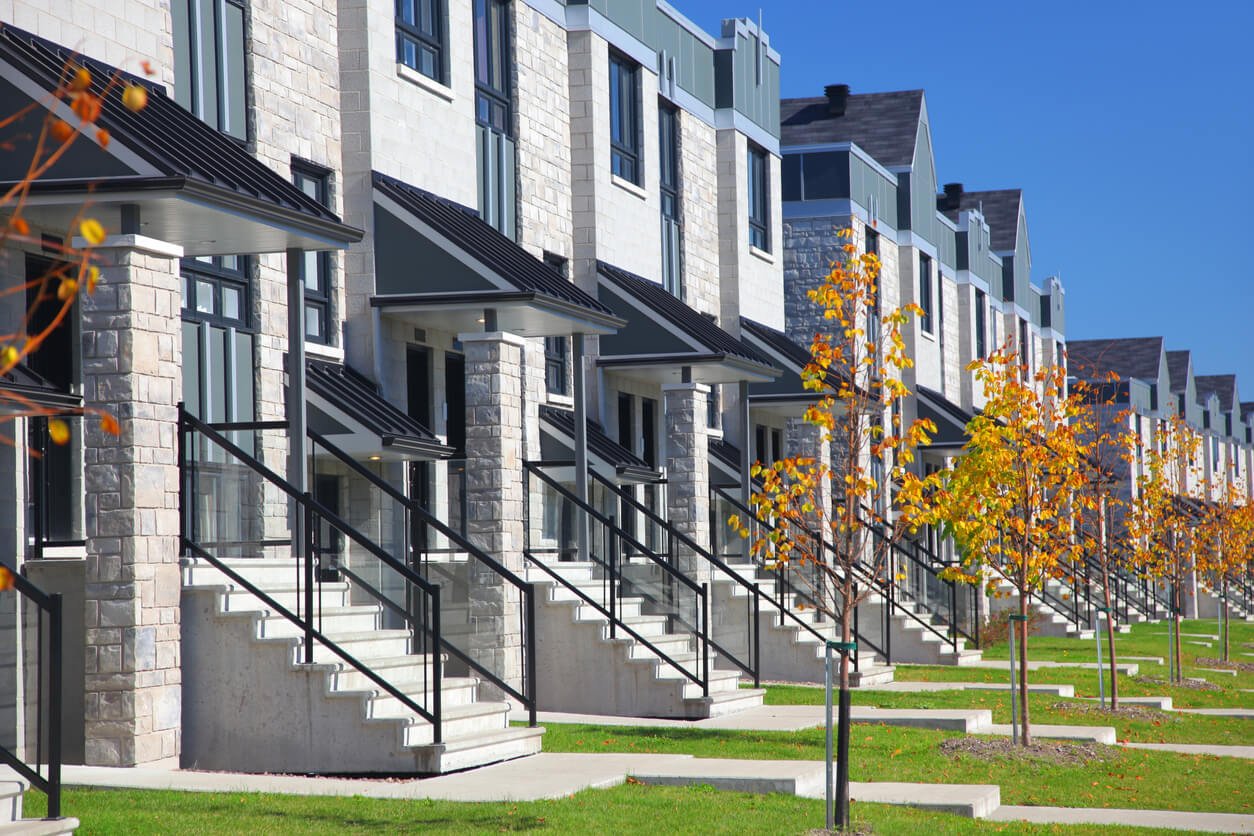If you’re in the D.C. area and looking to buy a home, Arlington may be at the top of your list of desirable locations. The city is just across the Potomac from D.C. and offers excellent access to jobs, culture, and more. There are also some fantastic sub-neighborhoods of Arlington that can make any buyer feel at home.
The neighborhood you choose will depend on whether you’re buying a home for yourself or looking for condos for sale in Arlington, VA. Read on to discover some of the best neighborhoods to look at, whether you’re purchasing your dream home or starting an investment.
Aurora Highlands
Aurora Highlands is a great choice for young professionals, people who like to travel, and people who want to be near the center of the action. This neighborhood is less than twenty minutes from D.C. and provides easy access to a variety of amenities. You’ll be less than five minutes from Ronald Reagan International Airports, close to Boeing and PBS, and minutes away from tons of local restaurants.
Homes in Aurora Highlands tend to be cozy townhomes or ranch-style houses, and they sell for around $870,000. Apartments rent for just under $2,000 a month, making this an excellent spot for investors. You’ll have plenty of young professional tenants looking to start their life in the city.
Bluemont
Bluemont is another favorite with young professionals, although it tends to appeal to young families, too. Bluemont offers a great sense of community with a walkable layout and a nice mix of new and historic homes. The neighborhood is less than twenty minutes away from the city center of D.C.
Homes in Bluemont tend to be a little more expensive, coming in at around $985,000. They can range in style, depending on what era they were built in, and are usually a little more than 2,000 square feet. Rent tends to be slightly higher than $2,000 a month and can be a much more affordable way for residents to get the Bluemont experience.
Radnor-Fort Myer Heights
Radnor-Fort Myer Heights is a much more affordable option for young professionals looking to be close to D.C. The neighborhood is less than fifteen minutes from the capital and provides amazing access to some of Arlington’s best amenities. Plus, many residents here decide to rent, making it the perfect spot for investors.
Homes in Radnor-Fort Myer Heights tend to sell for about $275,000 and are small — often less than 1,000 square feet. Right now, the rent is somewhere over $2,000 a month and may hover closer to $2,500. But this neighborhood offers unbeatable access to D.C.’s latest and greatest, making it worth the price tag for many residents.
Ballston-Virginia Square
Ballston-Virginia Square is perfect for residents who want a homey environment and easy transportation. There are lots of Metro stations around the neighborhood, as well as coffee shops, eateries, and a large outdoor mall. The neighborhood is about twenty minutes from D.C., making it a great option for commuters working in the city.
Homes in Ballston-Virginia Square sell for about $475,000 and are often less than 1,000 square feet. In fact, many of the homes are townhomes, condos, and apartments in Ballston-Virginia Square, which provide lots of opportunities for investors. Rent in this area averages just under $2,000, making it a competitive market with the other Arlington sub-neighborhoods.
Clarendon-Courthouse
Clarendon-Courthouse is a slightly pricier neighborhood in Arlington, but it comes with an amazing fast-paced living experience. There’s a thriving nightlife, a packed event calendar, and lots of bars and restaurants for residents to explore. Many of the Arlington government buildings are in the Clarendon-Courthouse neighborhood, meaning there are lots of job opportunities.
Clarendon-Courthouse is less than fifteen minutes from D.C., and homes there tend to sell for a little more than half a million dollars. The houses there tend to be small — often under 1,000 square feet — but the location is hard to beat. Rent is also a little pricier, coming in at around $2,500.
Arlington Ridge
If you’re looking for a historic place to live and raise a family, you’ll have a hard time finding a better neighborhood than Arlington Ridge. There are two Civil War forts in this neighborhood, and the Pentagon sits just north of it. There are lots of libraries and parks, and you’ll be less than twenty minutes from D.C.’s city center.
Homes in Arlington Ridge are definitely higher in the price point, selling for about $825,000 on average. However, they are more spacious, with most coming in over 2,000 square feet. Rent is also more expensive, with prices ranging between $2,500 and $3,000, so you’ll need to aim for a higher-income tenant demographic if you plan to invest here.
Barcroft
Barcroft is a fantastic neighborhood for young families and boasts low crime rates and excellent schools. There are lots of parks that include playgrounds, picnic tables, grills, basketball courts, and even sand volleyball courts. Barcroft is also under twenty minutes from D.C., making it a great choice for parents who commute.
Homes in Barcroft list for around $600,000, but as of this writing, they’re selling for more than $800,000. They tend to be relatively small, approximately 1,000 square feet, which is perfect for a young family. Rent is also a little more affordable, hitting closer to the $1,500 mark.
Chain Bridge Forest
If you want a beautiful neighborhood that gives you access to all the city amenities while maintaining a peaceful atmosphere, look no further than Chain Bridge Forest. This neighborhood is named for the chain bridge that connects Arlington and D.C., and it’s just twenty minutes from the city center and less than fifteen minutes from the National Cathedral. You’ll find this neighborhood is full of gorgeous lawns and forested backyards that make the area feel like a quiet hamlet.
Chain Bridge Forest isn’t the best place for investors — homes here tend to sell for well over a million dollars and often for more than two million. However, they do tend to be large and luxurious, making them an excellent choice for families with solid incomes. Homes in this area are hard to come by, so if you see a home you love hit the market, don’t hesitate to get your offer in.
Cherrydale
If your family is the outdoorsy sort, Cherrydale is a fantastic neighborhood for you. There are parks, ponds, trails, nature paths, and farmer’s markets to get your family outside. The area also has some of the best schools in the nation, and you’ll love attending the annual block parties and barbeques the residents throw.
Cherrydale is about twenty minutes from the D.C. city center, and homes here tend to be very desirable. Many sell for $800,000 or more, and most are over 2,500 square feet, giving you plenty of space. Rent tends to be around $2,500, so if you have a lot to invest, this neighborhood can give you good returns.
Dominion Hills
Dominion Hills is the sort of neighborhood that will make you want to slow down and smell the roses — quite literally. This quiet neighborhood is home to the Bon Air Park Rose Garden, as well as lots of shade trees and parks. And once you finish your relaxing stroll through the gardens, you can head into D.C., just twenty minutes away, to take advantage of all the city amenities.
Homes in Dominion Hills are a little more expensive than in Cherrydale, usually listing for around $885,000. They tend to be a little less than 2,000 square feet, which is plenty of room for a young couple or growing family. The rent is around $3,000, which can offer some excellent opportunities for higher-end investors.
Forest Glen
Forest Glen is another of those neighborhoods that may not be great for investors but is perfect for homeowners. The neighborhood has great schools, as well as a pediatric center right in the area. You can also find parks, nature trails, and a playground to keep active kids outdoors and having fun.
Forest Glen, like many of the neighborhoods on this list, is about twenty minutes from the D.C. city center. Homes can sell for anywhere from the low $600,000s to close to a million dollars and are usually more than 2,000 square feet. If you do want to invest here, rent runs around $2,300, which can be profitable on one of the more affordable houses.
Lyon Village
Lyon Village is another very walkable Arlington neighborhood that will make you want to get the family outdoors. The Lyon Community House hosts a variety of fun events throughout the year, and your kids will want to spend all summer on the splash pad. There’s also a Whole Foods in the neighborhood, along with several wonderful restaurants.
Lyon Village is just fifteen minutes from D.C. and tends to be a little higher on the price scale. Homes routinely sell for north of a million dollars and tend to be large, coming in over 2,500 square feet. It may come as no surprise that Lyon Village rents tend to be correspondingly higher — usually around $2,500.
Penrose
Penrose has everything you could want to raise a happy, healthy family, from a farmer’s market and great public library to strong schools and lots of parks. You can work in the community garden, take your dog for some playtime at the dog park, or have a picnic on a sunny afternoon. Penrose is also about fifteen minutes from D.C., which makes it incredibly convenient for commuters.
Penrose homes tend to be a little more affordable than in many of the family-friendly neighborhoods, selling for around $800,000. They also tend to be relatively large, averaging more than 2,000 square feet. Rent is a little lower, around $1,700 a month, which can make it a good entry point for investors just starting out.
Westover Village
Westover Village is a charming neighborhood for young professionals or budding families to get their start. The neighborhood is filled with historic Colonial-style houses and unusual grocery stores to expand your culinary horizons. Visit the farmer’s market during the summer and early fall, or stop by the Italian Store for a slice of pizza and a bottle of olive oil.
Westover Village is about twenty minutes from D.C. and tends to be a little more expensive. Houses usually sell for about a million dollars and tend to be a little under 2,000 square feet. Rent here, on the other hand, is relatively low, sticking under the $1,500 price point for a studio apartment.
Crystal City
Crystal City is Arlington’s largest downtown neighborhood and boasts all the sparkle and shine you’d expect from the name. There are lots of metro stops, and the Reagan International Airport is in this neighborhood. You can also find everything from stylish stores and scrumptious restaurants to live theater in Crystal City.
Crystal City is less than fifteen minutes from D.C., and it’s one of the most affordable neighborhoods in the city. Homes here sell for around $655,000 and are usually a little more than a thousand square feet. Rent is usually more than $2,000 here, making it a fantastic location for investors to buy property.
Find Condos for Sale in Arlington, VA
Arlington, VA is a fantastic place to buy a house or invest in a property. The city is less than half an hour from our nation’s capital and has a number of fantastic neighborhoods to suit any price range. You can find quiet villages, thriving metropolitan centers, and more with plenty of homes and apartments on the market.
If you’d like to find condos for sale in Arlington, VA, check out the rest of our site at Nomadic Real Estate. We provide leasing, management, sales, and, most importantly, peace of mind. Contact us today and start making your D.C. investment the smart way.



































